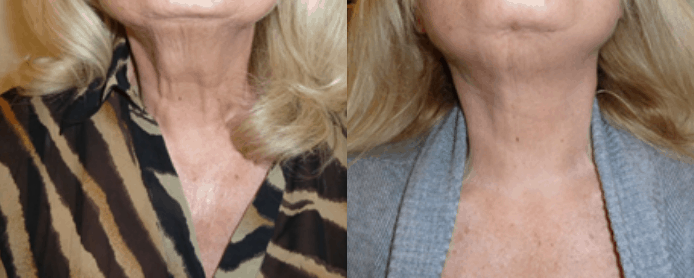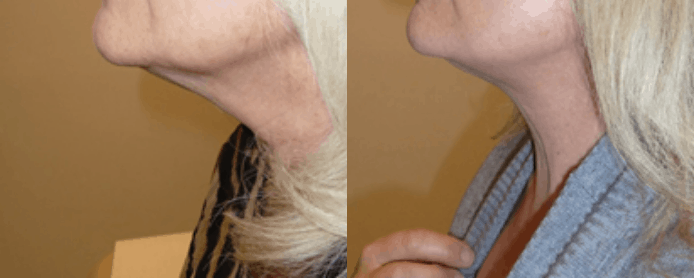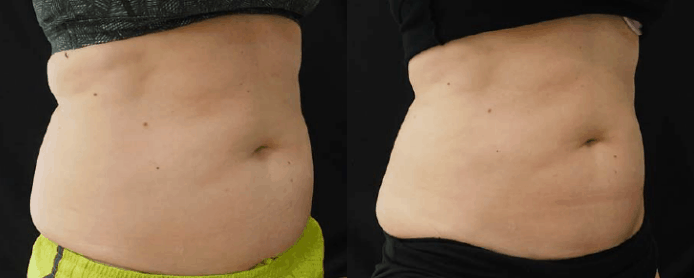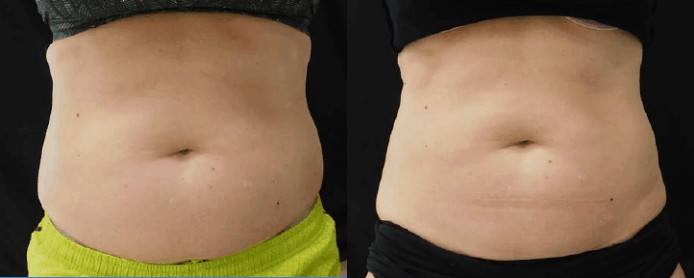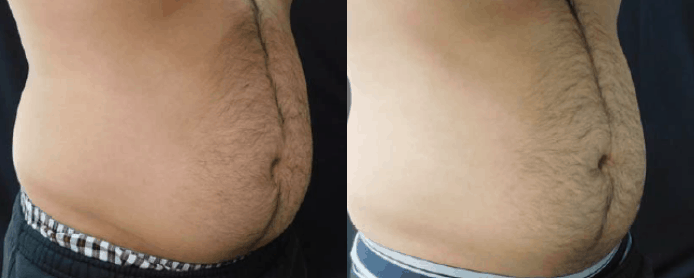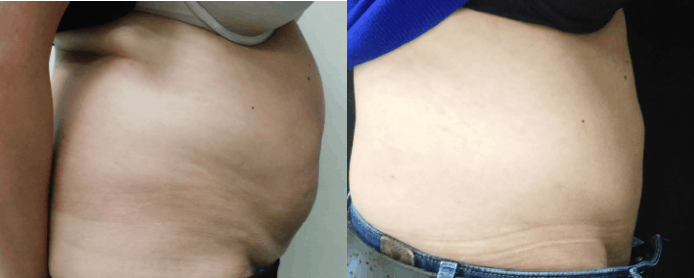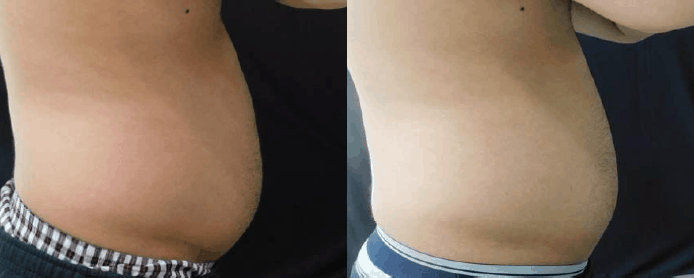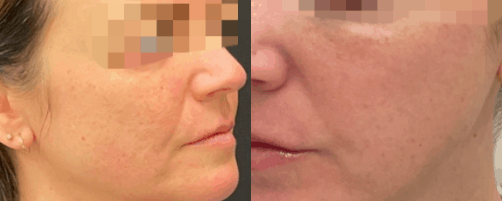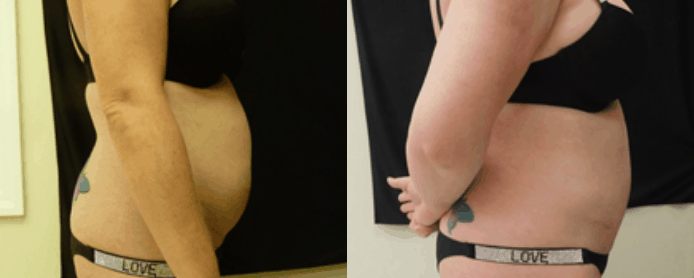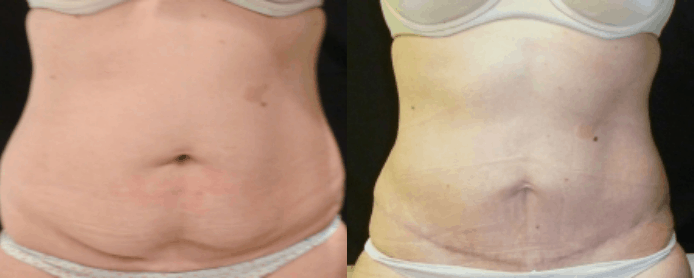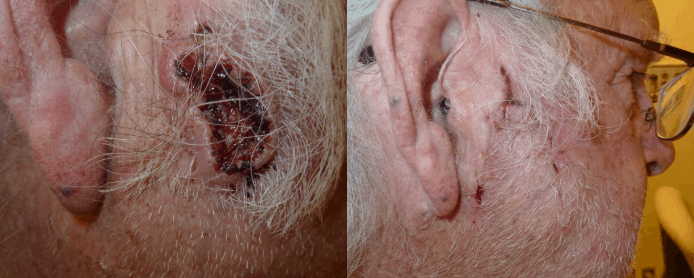Facial Surgeries
Face Lift
Face Lift
As people age, the skin and tissue lose their natural elasticity and begin to sag and wrinkle on the face
Causes
- Aging
- Weight Loss
- Excessive fat deposition
- Genetics
What is a Face Lift?
A Facelift, or Rhytidectomy, is a surgical procedure that improves visible signs of aging in the face and neck such as:
→ Relaxation of the skin of the face causing sagging
→ Deepening of the fold lines between the nose and corner of the mouth
→ The fat that has fallen or has disappeared
→ Jowls
→ Loose skin and excess fat of the neck that can appear as a double chin or “turkey neck”
The loss of youthful contours in the face can be due to a variety of factors, including thinning of the skin, loss of facial fat, gravity, sun damage, smoking, as well as heredity and stress.
Other procedures that might be performed in conjunction with a facelift are a brow lift and eyelid surgery to rejuvenate aging eyes. Fat transfer or fillers may be suggested to replace the lost fatty volume. Skin treatments such as IPL, dermabrasion, peels or laser may be offered to improve the quality and texture of the skin.
Benefits of a Facelift
Is This Right For Me?
Facelift Before & After
Our Results
Ready for Your Transformation?
Neck Lift
Neck Lift Surgery In Barrie, Ontario
Neck Lift
The skin on the neck can begin to sag after losing its elasticity and ability to stretch and stay tight.
Causes
- Aging
- Weight Loss
- Excessive fat deposition
- Genetics
What is a Neck Lift?
Problem – Excessive fat deposition
→ Liposuction or submental fat dissection
→ Skin excision – tightening using short scar technique; behind the ear
→ Platysma band – sub mental incision and band resection or tightness
→ Combined problems need combined approaches
→ Loose skin and excess fat of the neck that can appear as a double chin or “turkey neck”
The loss of youthful contours in the face can be due to a variety of factors, including thinning of the skin, loss of facial fat, gravity, sun damage, smoking, as well as heredity and stress. Other procedures that might be performed in conjunction with a facelift are a brow lift and eyelid surgery to rejuvenate aging eyes. Fat transfer or fillers may be suggested to replace the lost fatty volume. Skin treatments such as IPL, dermabrasion, peels or laser may be offered to improve the quality and texture of the skin.
Benefits of a Neck Lift
Technique
→ Central approach for platysmal band correction and direct fat excision. Most of the time, both approach in moderate to severe neck laxity.
→ Liposuction of the submental fat pad.
→ Surgery could only be one of the above techniques or all of them. It depends on the severity.
Post Operative Management
-
Cold compresses
- Avoid Pressure
-
Drains
- Incision management with antibiotic cream
- Facial cleansing
How to Improve Your Results
Meet Dr. Tumi
Is This Right For Me?
Neck Lift Before & After
Ready for Your Transformation?
Eyelid Surgery
Eyelid Surgery
Improve the appearance of your eyes and the skin surrounding them with eyelid surgery!
Causes
- Aging
- Weight Loss
- Excessive fat deposition
- Genetics
What is Eyelid Surgery?
Eyelid surgery, also known as a blepharoplasty, repairs droopy, sagging eyelids by removing excess skin. Some people have eyelid surgery to correct problems that are a result of ageing, while others have inherited traits such as bags under their eyes that cause them to seek treatment at a younger age.
If the upper eyelid condition is accompanied by sagging of the eyebrows, then a forehead (brow) lift may be recommended. Smoothing of crow’s feet may require Botox, chemical peeling or laser resurfacing procedures. Circles beneath the eyes caused by dark pigmentation may be treated with a bleaching solution or chemical peel. Alternatively, sinking around the bony orbit below the eye can be addressed with fat grafting or a mid-facelift.
Dr. Tumi performs this procedure in our new office which is very cost-effective. It is done under a local anesthetic, which is convenient for the client and recovery is much easier than going under a general anesthetic. The results are amazing!
Benefits of Eyelid Surgery
Eyelid Surgery Technique
For lower lid surgery the incision is usually hidden below the lower lashes. Through this incision, excess skin, muscle and fat are removed. Fat may also be redistributed to improve puffiness or bulges. Other adjustments such as canthopexy (eyelid tightening) may be done to correct special problems such as muscle laxity.
You and Dr. Tumi may decide that the best approach for removing excess fat is a technique that needs no external incision. This procedure is called trans-conjunctival lower blepharoplasty. While it is a good approach for younger patients, it cannot be used to remove excess skin so a laser may be used in conjunction with this method to tighten the skin under the eyes.
Meet Dr. Tumi
Is This Right For Me?
Eyelid surgery Before & After
Ready for Your Transformation?
Facial Fat Grafting
Facial Fat Grafting in Barrie, Ontario
Facial Fat Grafting
Smoothen your face with facial fat grafting.
Causes
- Aging
- Genetics
What is Facial Fat Grafting?
Benefits of Facial Fat Grafting
Facial Fat Grafting Technique
Your plastic surgeon will choose a “donor area”, typically the abdomen or buttocks, to extract the fat from. He or she will use a small needle to harvest the fat. The fat graft is prepared by centrifugation and separation of the fat cells and the stem cells from the blood serum and local anesthesia. The grafted fat is ready to be transferred once it has redeveloped a blood supply. About 50% of the injected fat will survive. The injection usually only takes a few moments per site and depending on the number of areas treated, the whole process could take anywhere from 15 minutes to an hour. The injection will not be painless and your plastic surgeon will use a cold instrument or administer local anesthesia to ease the pain.
It will take anywhere from 10 – 21 days to recover from facial fat grafting. You can continue most of your normal activities the day of your procedure, however, you should avoid intense physical activity for the first 24 – 48 hours.
Meet Dr. Tumi
Is This Right For Me?
Facial Fat Grafting Before & After
Our Results
Ready for Your Transformation?
Chin Augmentation and Liposuction
Chin Augmentation and Liposuction
Get rid of your double chin and sharpen your jawline with chin augmentation surgery.
Causes
- Weight gain
- Aging
-
Genetics
What is Chin Augmentation?
Chin Augmentation Benefits
Chin Augmentation Technique
To add width and proportion to the jawline, your plastic surgeon may insert a silicone device or inject filler into the face. There are many ways to perform this procedure. Some of the methods include moving the chin forward or backward, and/or making the chin longer or shorter. Before your surgical chin augmentation procedure, Dr. Tumi will sculpt the implant according to the size of your face. During the procedure, your plastic surgeon will implant a plastic or metal material into the chin and adhere it to the bone. After the incision is closed, compression tape will be put on the outside of your mouth and chin to protect the area while healing. The surgery will take anywhere from 30 minutes to three hours.
In a non-surgical chin augmentation procedure, a plastic surgeon will inject the chin with fillers or the patient’s body fat. In some cases, a plastic surgeon will also liposuction the area to enhance the effects of the chin augmentation.
Meet Dr. Tumi
Chin Augmentation Before and After
Our Results
Earlobe Repair
What is Earlobe Repair?
Earlobe Repair Benefits
Earlobe Repair Technique
The ear repair surgery is generally performed with local anesthesia. It is considered a minor procedure that should take around 15 minutes per ear, 30 minutes in total. During earlobe repair, your plastic surgeon will incise the edges of the torn or split earlobes to create two fresh edges that will be stitched together. During earlobe reduction, a wedge sized piece of the earlobe will be removed and the new edges will be stitched together.
Is This Right For Me?
Earlobe Repair Before and After
Our Results
Brow Lift
Brow Lift Procedures In Barrie, Ontario
Brow Lift
A brow lift will improve the appearance of your forehead by raising the skin around your eyes.
Causes
- Excessive fat deposition
- Aging
- Genetics
What is a Brow Lift?
Benefits of a Brow Lift
Brow Lift Technique
The surgical technique that your plastic surgeon recommends will depend on factors such as the position of your eyebrows, the amount of excess upper eyelid skin you have and the height of your hairline (the height of your hairline can be altered a little after surgery).
Often, an incision is made across the top of the scalp, beginning above the ears and hidden in the hair. Sometimes, the incision may be placed in front of the hairline. The incision is designed to be inconspicuous once healed. Through these incisions, your plastic surgeon can modify or remove parts of the muscles that cause frown lines, remove excess skin, and lift your eyebrows to a more youthful level.
Another forehead lift technique uses an endoscope. This is a long, thin tube with a light on the end, attached to a video camera. The endoscope is inserted through a few tiny incisions in the scalp. It allows your plastic surgeon to see and work on the inside structure of the forehead. The endoscopic technique has the advantage of requiring minimal incisions, but it may not be appropriate for all patients.
If your main concern is frown lines between your eyebrows, a limited endoscopic procedure can be performed to correct these problems. If you are having upper eyelid surgery performed, it may also be possible to treat frown lines by way of the incisions that are made in the upper eyelid.
Is This Right For Me?
Brow Lift Before & After
Our Results
Rhinoplasty – Aesthetic
Aesthetic Rhinoplasty in Barrie, Ontario
What is an Aesthetic Rhinoplasty?
→ The size of the nose; symmetrical with the face
→The nose width at the bridge
→ The nasal tip; large or bulbous, drooping or too upturned
→ The nose profile; visible humps or depressions on the bridge
→ Nostrils are too large, wide or upturned
→ Nostrils are too large, wide or upturned
→ Nasal asymmetry and deviation
Rhinoplasty is a personal choice that you should do for yourself, not for anyone else.
Benefits of an Aesthetic Rhinoplasty
Rhinoplasty is a Good Option For You If
Ask Us Anything!
Aesthetic Rhinoplasty Before & After
Our Results
Rhinoplasty – Post-Traumatic
Aesthetic Rhinoplasty in Barrie, Ontario
Rhinoplasty – Post-Traumatic
A post-traumatic rhinoplasty will restore the structure and appearance of the nose after an accident.
What is a Post-Traumatic Rhinoplasty?
A post-traumatic rhinoplasty is a surgery that will address broken and fractured bones in the nose as the result of a traumatic injury to the nose or a blow to the face. Sometimes breathing problems related to the internal nasal structures can be corrected at the same time as nose reshaping. It is important to have a clear idea of how you would like your nose to look as well as know there are some limitations to aesthetic nasal surgery.
In evaluating you for a rhinoplasty, your plastic surgeon will examine your nose both internally and externally. Skin quality as well as the size and shape of your nose must be carefully studied. Sometimes, chin augmentation may be suggested so that a more harmonious facial balance can be achieved.
Benefits of a Post-Traumatic Rhinoplasty
Rhinoplasty Technique
If your nose needs to be augmented, this can be accomplished using cartilage from your nose or cartilage from another part of the body. The skin and soft tissues will reposition themselves over the new form of your nose. In most cases, incisions will be placed inside your nose so they will not be visible. If the base of the nose is narrowed or the nostrils reduced, small pieces of skin below the nostrils will be removed. When external incisions are recommended they are placed in well hidden areas like the crease where the nose and cheek join or where the nose and the lip join.
Is This Right For Me?
Meet Dr. Tumi
Ask Us Anything!
Post-Traumatic Rhinoplasty Before & After
Our Results
Skin Cancer Removal
Skin Cancer Removal
More than one in four fair-skinned Canadians will get skin cancer in their lifetime. Dr. Tumi offers supportive and thorough skin cancer removal.
Causes
Aging
Genetics
Skin Cancer Removal
The longer you wait to have skin cancer removed, the bigger it grows, and the more complicated the reconstruction becomes in order to make the patient look as close to normal as possible. This is why it’s best to be treated early while it’s still small.
Basal Cell Skin Cancer
It is usually a smooth pink or red, flat or lumpy area. Basal skin cancer does not go away but gradually gets larger and larger. These cancers generally do not know how to spread elsewhere (metastasize). They therefore do not generally get into the blood, and do not spread to the lungs, liver or brain as do many cancers such as breast or bowel cancer. Basal cell skin cancer generally isn’t fatal unless you refuse to address it and it continues to grow. The cure rate with removing these surgically is over 95%. Those who are not cured simply have not had all of the cancer cells removed and will require additional surgery to remove leftover cancer.
Squamous Cell Skin Cancer
Squamous cell skin cancers also have a slightly higher risk of metastasizing than basal cell skin cancers. However, the risk of metastasis and death is usually less than 5% if the squamous cell skin cancer is in a sun-induced area (i.e. not on the genitals, inside the mouth, or in the anal areas). Squamous cell skin cancers on the hands, the lips and ears do have a higher risk of metastasis than sun-induced squamous cell skin cancers on the rest of the face and body..
Meet Dr. Tumi
Benefits of Skin Cancer Removal
Face Lift
Face Lift
As people age, the skin and tissue lose their natural elasticity and begin to sag and wrinkle on the face
Causes
- Aging
- Weight Loss
- Excessive fat deposition
- Genetics
What is a Face Lift?
A Facelift, or Rhytidectomy, is a surgical procedure that improves visible signs of aging in the face and neck such as:
→ Relaxation of the skin of the face causing sagging
→ Deepening of the fold lines between the nose and corner of the mouth
→ The fat that has fallen or has disappeared
→ Jowls
→ Loose skin and excess fat of the neck that can appear as a double chin or “turkey neck”
The loss of youthful contours in the face can be due to a variety of factors, including thinning of the skin, loss of facial fat, gravity, sun damage, smoking, as well as heredity and stress.
Other procedures that might be performed in conjunction with a facelift are a brow lift and eyelid surgery to rejuvenate aging eyes. Fat transfer or fillers may be suggested to replace the lost fatty volume. Skin treatments such as IPL, dermabrasion, peels or laser may be offered to improve the quality and texture of the skin.
Benefits of a Facelift
Is This Right For Me?
Facelift Before & After
Our Results
Ready for Your Transformation?
Neck Lift
Neck Lift Surgery In Barrie, Ontario
Neck Lift
The skin on the neck can begin to sag after losing its elasticity and ability to stretch and stay tight.
Causes
- Aging
- Weight Loss
- Excessive fat deposition
- Genetics
What is a Neck Lift?
Problem – Excessive fat deposition
→ Liposuction or submental fat dissection
→ Skin excision – tightening using short scar technique; behind the ear
→ Platysma band – sub mental incision and band resection or tightness
→ Combined problems need combined approaches
→ Loose skin and excess fat of the neck that can appear as a double chin or “turkey neck”
The loss of youthful contours in the face can be due to a variety of factors, including thinning of the skin, loss of facial fat, gravity, sun damage, smoking, as well as heredity and stress. Other procedures that might be performed in conjunction with a facelift are a brow lift and eyelid surgery to rejuvenate aging eyes. Fat transfer or fillers may be suggested to replace the lost fatty volume. Skin treatments such as IPL, dermabrasion, peels or laser may be offered to improve the quality and texture of the skin.
Benefits of a Neck Lift
Technique
→ Central approach for platysmal band correction and direct fat excision. Most of the time, both approach in moderate to severe neck laxity.
→ Liposuction of the submental fat pad.
→ Surgery could only be one of the above techniques or all of them. It depends on the severity.
Post Operative Management
-
Cold compresses
- Avoid Pressure
-
Drains
- Incision management with antibiotic cream
- Facial cleansing
How to Improve Your Results
Meet Dr. Tumi
Is This Right For Me?
Neck Lift Before & After
Ready for Your Transformation?
Eyelid Surgery
Eyelid Surgery
Improve the appearance of your eyes and the skin surrounding them with eyelid surgery!
Causes
- Aging
- Weight Loss
- Excessive fat deposition
- Genetics
What is Eyelid Surgery?
Eyelid surgery, also known as a blepharoplasty, repairs droopy, sagging eyelids by removing excess skin. Some people have eyelid surgery to correct problems that are a result of ageing, while others have inherited traits such as bags under their eyes that cause them to seek treatment at a younger age.
If the upper eyelid condition is accompanied by sagging of the eyebrows, then a forehead (brow) lift may be recommended. Smoothing of crow’s feet may require Botox, chemical peeling or laser resurfacing procedures. Circles beneath the eyes caused by dark pigmentation may be treated with a bleaching solution or chemical peel. Alternatively, sinking around the bony orbit below the eye can be addressed with fat grafting or a mid-facelift.
Dr. Tumi performs this procedure in our new office which is very cost-effective. It is done under a local anesthetic, which is convenient for the client and recovery is much easier than going under a general anesthetic. The results are amazing!
Benefits of Eyelid Surgery
Eyelid Surgery Technique
For lower lid surgery the incision is usually hidden below the lower lashes. Through this incision, excess skin, muscle and fat are removed. Fat may also be redistributed to improve puffiness or bulges. Other adjustments such as canthopexy (eyelid tightening) may be done to correct special problems such as muscle laxity.
You and Dr. Tumi may decide that the best approach for removing excess fat is a technique that needs no external incision. This procedure is called trans-conjunctival lower blepharoplasty. While it is a good approach for younger patients, it cannot be used to remove excess skin so a laser may be used in conjunction with this method to tighten the skin under the eyes.
Meet Dr. Tumi
Is This Right For Me?
Eyelid surgery Before & After
Ready for Your Transformation?
Facial Fat Grafting
Facial Fat Grafting in Barrie, Ontario
Facial Fat Grafting
Smoothen your face with facial fat grafting.
Causes
- Aging
- Genetics
What is Facial Fat Grafting?
Benefits of Facial Fat Grafting
Facial Fat Grafting Technique
Your plastic surgeon will choose a “donor area”, typically the abdomen or buttocks, to extract the fat from. He or she will use a small needle to harvest the fat. The fat graft is prepared by centrifugation and separation of the fat cells and the stem cells from the blood serum and local anesthesia. The grafted fat is ready to be transferred once it has redeveloped a blood supply. About 50% of the injected fat will survive. The injection usually only takes a few moments per site and depending on the number of areas treated, the whole process could take anywhere from 15 minutes to an hour. The injection will not be painless and your plastic surgeon will use a cold instrument or administer local anesthesia to ease the pain.
It will take anywhere from 10 – 21 days to recover from facial fat grafting. You can continue most of your normal activities the day of your procedure, however, you should avoid intense physical activity for the first 24 – 48 hours.
Meet Dr. Tumi
Is This Right For Me?
Facial Fat Grafting Before & After
Our Results
Ready for Your Transformation?
Chin Augmentation and Liposuction
Chin Augmentation and Liposuction
Get rid of your double chin and sharpen your jawline with chin augmentation surgery.
Causes
- Weight gain
- Aging
-
Genetics
What is Chin Augmentation?
Chin Augmentation Benefits
Chin Augmentation Technique
To add width and proportion to the jawline, your plastic surgeon may insert a silicone device or inject filler into the face. There are many ways to perform this procedure. Some of the methods include moving the chin forward or backward, and/or making the chin longer or shorter. Before your surgical chin augmentation procedure, Dr. Tumi will sculpt the implant according to the size of your face. During the procedure, your plastic surgeon will implant a plastic or metal material into the chin and adhere it to the bone. After the incision is closed, compression tape will be put on the outside of your mouth and chin to protect the area while healing. The surgery will take anywhere from 30 minutes to three hours.
In a non-surgical chin augmentation procedure, a plastic surgeon will inject the chin with fillers or the patient’s body fat. In some cases, a plastic surgeon will also liposuction the area to enhance the effects of the chin augmentation.
Meet Dr. Tumi
Chin Augmentation Before and After
Our Results
Earlobe Repair
What is Earlobe Repair?
Earlobe Repair Benefits
Earlobe Repair Technique
The ear repair surgery is generally performed with local anesthesia. It is considered a minor procedure that should take around 15 minutes per ear, 30 minutes in total. During earlobe repair, your plastic surgeon will incise the edges of the torn or split earlobes to create two fresh edges that will be stitched together. During earlobe reduction, a wedge sized piece of the earlobe will be removed and the new edges will be stitched together.
Is This Right For Me?
Earlobe Repair Before and After
Our Results
Brow Lift
Brow Lift Procedures In Barrie, Ontario
Brow Lift
A brow lift will improve the appearance of your forehead by raising the skin around your eyes.
Causes
- Excessive fat deposition
- Aging
- Genetics
What is a Brow Lift?
Benefits of a Brow Lift
Brow Lift Technique
The surgical technique that your plastic surgeon recommends will depend on factors such as the position of your eyebrows, the amount of excess upper eyelid skin you have and the height of your hairline (the height of your hairline can be altered a little after surgery).
Often, an incision is made across the top of the scalp, beginning above the ears and hidden in the hair. Sometimes, the incision may be placed in front of the hairline. The incision is designed to be inconspicuous once healed. Through these incisions, your plastic surgeon can modify or remove parts of the muscles that cause frown lines, remove excess skin, and lift your eyebrows to a more youthful level.
Another forehead lift technique uses an endoscope. This is a long, thin tube with a light on the end, attached to a video camera. The endoscope is inserted through a few tiny incisions in the scalp. It allows your plastic surgeon to see and work on the inside structure of the forehead. The endoscopic technique has the advantage of requiring minimal incisions, but it may not be appropriate for all patients.
If your main concern is frown lines between your eyebrows, a limited endoscopic procedure can be performed to correct these problems. If you are having upper eyelid surgery performed, it may also be possible to treat frown lines by way of the incisions that are made in the upper eyelid.
Is This Right For Me?
Brow Lift Before & After
Our Results
Rhinoplasty – Aesthetic
Aesthetic Rhinoplasty in Barrie, Ontario
What is an Aesthetic Rhinoplasty?
→ The size of the nose; symmetrical with the face
→The nose width at the bridge
→ The nasal tip; large or bulbous, drooping or too upturned
→ The nose profile; visible humps or depressions on the bridge
→ Nostrils are too large, wide or upturned
→ Nostrils are too large, wide or upturned
→ Nasal asymmetry and deviation
Rhinoplasty is a personal choice that you should do for yourself, not for anyone else.
Benefits of an Aesthetic Rhinoplasty
Rhinoplasty is a Good Option For You If
Ask Us Anything!
Aesthetic Rhinoplasty Before & After
Our Results
Rhinoplasty – Post-Traumatic
Aesthetic Rhinoplasty in Barrie, Ontario
Rhinoplasty – Post-Traumatic
A post-traumatic rhinoplasty will restore the structure and appearance of the nose after an accident.
What is a Post-Traumatic Rhinoplasty?
A post-traumatic rhinoplasty is a surgery that will address broken and fractured bones in the nose as the result of a traumatic injury to the nose or a blow to the face. Sometimes breathing problems related to the internal nasal structures can be corrected at the same time as nose reshaping. It is important to have a clear idea of how you would like your nose to look as well as know there are some limitations to aesthetic nasal surgery.
In evaluating you for a rhinoplasty, your plastic surgeon will examine your nose both internally and externally. Skin quality as well as the size and shape of your nose must be carefully studied. Sometimes, chin augmentation may be suggested so that a more harmonious facial balance can be achieved.
Benefits of a Post-Traumatic Rhinoplasty
Rhinoplasty Technique
If your nose needs to be augmented, this can be accomplished using cartilage from your nose or cartilage from another part of the body. The skin and soft tissues will reposition themselves over the new form of your nose. In most cases, incisions will be placed inside your nose so they will not be visible. If the base of the nose is narrowed or the nostrils reduced, small pieces of skin below the nostrils will be removed. When external incisions are recommended they are placed in well hidden areas like the crease where the nose and cheek join or where the nose and the lip join.
Is This Right For Me?
Meet Dr. Tumi
Ask Us Anything!
Post-Traumatic Rhinoplasty Before & After
Our Results
Skin Cancer Removal
Skin Cancer Removal
More than one in four fair-skinned Canadians will get skin cancer in their lifetime. Dr. Tumi offers supportive and thorough skin cancer removal.
Causes
Aging
Genetics
Skin Cancer Removal
The longer you wait to have skin cancer removed, the bigger it grows, and the more complicated the reconstruction becomes in order to make the patient look as close to normal as possible. This is why it’s best to be treated early while it’s still small.
Basal Cell Skin Cancer
It is usually a smooth pink or red, flat or lumpy area. Basal skin cancer does not go away but gradually gets larger and larger. These cancers generally do not know how to spread elsewhere (metastasize). They therefore do not generally get into the blood, and do not spread to the lungs, liver or brain as do many cancers such as breast or bowel cancer. Basal cell skin cancer generally isn’t fatal unless you refuse to address it and it continues to grow. The cure rate with removing these surgically is over 95%. Those who are not cured simply have not had all of the cancer cells removed and will require additional surgery to remove leftover cancer.
Squamous Cell Skin Cancer
Squamous cell skin cancers also have a slightly higher risk of metastasizing than basal cell skin cancers. However, the risk of metastasis and death is usually less than 5% if the squamous cell skin cancer is in a sun-induced area (i.e. not on the genitals, inside the mouth, or in the anal areas). Squamous cell skin cancers on the hands, the lips and ears do have a higher risk of metastasis than sun-induced squamous cell skin cancers on the rest of the face and body..
Meet Dr. Tumi
Benefits of Skin Cancer Removal
Face Lift
Face Lift
As people age, the skin and tissue lose their natural elasticity and begin to sag and wrinkle on the face
Causes
- Aging
- Weight Loss
- Excessive fat deposition
- Genetics
What is a Face Lift?
A Facelift, or Rhytidectomy, is a surgical procedure that improves visible signs of aging in the face and neck such as:
→ Relaxation of the skin of the face causing sagging
→ Deepening of the fold lines between the nose and corner of the mouth
→ The fat that has fallen or has disappeared
→ Jowls
→ Loose skin and excess fat of the neck that can appear as a double chin or “turkey neck”
The loss of youthful contours in the face can be due to a variety of factors, including thinning of the skin, loss of facial fat, gravity, sun damage, smoking, as well as heredity and stress.
Other procedures that might be performed in conjunction with a facelift are a brow lift and eyelid surgery to rejuvenate aging eyes. Fat transfer or fillers may be suggested to replace the lost fatty volume. Skin treatments such as IPL, dermabrasion, peels or laser may be offered to improve the quality and texture of the skin.
Benefits of a Facelift
Is This Right For Me?
Facelift Before & After
Our Results
Ready for Your Transformation?
Neck Lift
Neck Lift Surgery In Barrie, Ontario
Neck Lift
The skin on the neck can begin to sag after losing its elasticity and ability to stretch and stay tight.
Causes
- Aging
- Weight Loss
- Excessive fat deposition
- Genetics
What is a Neck Lift?
Problem – Excessive fat deposition
→ Liposuction or submental fat dissection
→ Skin excision – tightening using short scar technique; behind the ear
→ Platysma band – sub mental incision and band resection or tightness
→ Combined problems need combined approaches
→ Loose skin and excess fat of the neck that can appear as a double chin or “turkey neck”
The loss of youthful contours in the face can be due to a variety of factors, including thinning of the skin, loss of facial fat, gravity, sun damage, smoking, as well as heredity and stress. Other procedures that might be performed in conjunction with a facelift are a brow lift and eyelid surgery to rejuvenate aging eyes. Fat transfer or fillers may be suggested to replace the lost fatty volume. Skin treatments such as IPL, dermabrasion, peels or laser may be offered to improve the quality and texture of the skin.
Benefits of a Neck Lift
Technique
→ Central approach for platysmal band correction and direct fat excision. Most of the time, both approach in moderate to severe neck laxity.
→ Liposuction of the submental fat pad.
→ Surgery could only be one of the above techniques or all of them. It depends on the severity.
Post Operative Management
-
Cold compresses
- Avoid Pressure
-
Drains
- Incision management with antibiotic cream
- Facial cleansing
How to Improve Your Results
Meet Dr. Tumi
Is This Right For Me?
Neck Lift Before & After
Ready for Your Transformation?
Eyelid Surgery
Eyelid Surgery
Improve the appearance of your eyes and the skin surrounding them with eyelid surgery!
Causes
- Aging
- Weight Loss
- Excessive fat deposition
- Genetics
What is Eyelid Surgery?
Eyelid surgery, also known as a blepharoplasty, repairs droopy, sagging eyelids by removing excess skin. Some people have eyelid surgery to correct problems that are a result of ageing, while others have inherited traits such as bags under their eyes that cause them to seek treatment at a younger age.
If the upper eyelid condition is accompanied by sagging of the eyebrows, then a forehead (brow) lift may be recommended. Smoothing of crow’s feet may require Botox, chemical peeling or laser resurfacing procedures. Circles beneath the eyes caused by dark pigmentation may be treated with a bleaching solution or chemical peel. Alternatively, sinking around the bony orbit below the eye can be addressed with fat grafting or a mid-facelift.
Dr. Tumi performs this procedure in our new office which is very cost-effective. It is done under a local anesthetic, which is convenient for the client and recovery is much easier than going under a general anesthetic. The results are amazing!
Benefits of Eyelid Surgery
Eyelid Surgery Technique
For lower lid surgery the incision is usually hidden below the lower lashes. Through this incision, excess skin, muscle and fat are removed. Fat may also be redistributed to improve puffiness or bulges. Other adjustments such as canthopexy (eyelid tightening) may be done to correct special problems such as muscle laxity.
You and Dr. Tumi may decide that the best approach for removing excess fat is a technique that needs no external incision. This procedure is called trans-conjunctival lower blepharoplasty. While it is a good approach for younger patients, it cannot be used to remove excess skin so a laser may be used in conjunction with this method to tighten the skin under the eyes.
Meet Dr. Tumi
Is This Right For Me?
Eyelid surgery Before & After
Ready for Your Transformation?
Facial Fat Grafting
Facial Fat Grafting in Barrie, Ontario
Facial Fat Grafting
Smoothen your face with facial fat grafting.
Causes
- Aging
- Genetics
What is Facial Fat Grafting?
Benefits of Facial Fat Grafting
Facial Fat Grafting Technique
Your plastic surgeon will choose a “donor area”, typically the abdomen or buttocks, to extract the fat from. He or she will use a small needle to harvest the fat. The fat graft is prepared by centrifugation and separation of the fat cells and the stem cells from the blood serum and local anesthesia. The grafted fat is ready to be transferred once it has redeveloped a blood supply. About 50% of the injected fat will survive. The injection usually only takes a few moments per site and depending on the number of areas treated, the whole process could take anywhere from 15 minutes to an hour. The injection will not be painless and your plastic surgeon will use a cold instrument or administer local anesthesia to ease the pain.
It will take anywhere from 10 – 21 days to recover from facial fat grafting. You can continue most of your normal activities the day of your procedure, however, you should avoid intense physical activity for the first 24 – 48 hours.
Meet Dr. Tumi
Is This Right For Me?
Facial Fat Grafting Before & After
Our Results
Ready for Your Transformation?
Chin Augmentation and Liposuction
Chin Augmentation and Liposuction
Get rid of your double chin and sharpen your jawline with chin augmentation surgery.
Causes
- Weight gain
- Aging
-
Genetics
What is Chin Augmentation?
Chin Augmentation Benefits
Chin Augmentation Technique
To add width and proportion to the jawline, your plastic surgeon may insert a silicone device or inject filler into the face. There are many ways to perform this procedure. Some of the methods include moving the chin forward or backward, and/or making the chin longer or shorter. Before your surgical chin augmentation procedure, Dr. Tumi will sculpt the implant according to the size of your face. During the procedure, your plastic surgeon will implant a plastic or metal material into the chin and adhere it to the bone. After the incision is closed, compression tape will be put on the outside of your mouth and chin to protect the area while healing. The surgery will take anywhere from 30 minutes to three hours.
In a non-surgical chin augmentation procedure, a plastic surgeon will inject the chin with fillers or the patient’s body fat. In some cases, a plastic surgeon will also liposuction the area to enhance the effects of the chin augmentation.
Meet Dr. Tumi
Chin Augmentation Before and After
Our Results
Earlobe Repair
What is Earlobe Repair?
Earlobe Repair Benefits
Earlobe Repair Technique
The ear repair surgery is generally performed with local anesthesia. It is considered a minor procedure that should take around 15 minutes per ear, 30 minutes in total. During earlobe repair, your plastic surgeon will incise the edges of the torn or split earlobes to create two fresh edges that will be stitched together. During earlobe reduction, a wedge sized piece of the earlobe will be removed and the new edges will be stitched together.
Is This Right For Me?
Earlobe Repair Before and After
Our Results
Brow Lift
Brow Lift Procedures In Barrie, Ontario
Brow Lift
A brow lift will improve the appearance of your forehead by raising the skin around your eyes.
Causes
- Excessive fat deposition
- Aging
- Genetics
What is a Brow Lift?
Benefits of a Brow Lift
Brow Lift Technique
The surgical technique that your plastic surgeon recommends will depend on factors such as the position of your eyebrows, the amount of excess upper eyelid skin you have and the height of your hairline (the height of your hairline can be altered a little after surgery).
Often, an incision is made across the top of the scalp, beginning above the ears and hidden in the hair. Sometimes, the incision may be placed in front of the hairline. The incision is designed to be inconspicuous once healed. Through these incisions, your plastic surgeon can modify or remove parts of the muscles that cause frown lines, remove excess skin, and lift your eyebrows to a more youthful level.
Another forehead lift technique uses an endoscope. This is a long, thin tube with a light on the end, attached to a video camera. The endoscope is inserted through a few tiny incisions in the scalp. It allows your plastic surgeon to see and work on the inside structure of the forehead. The endoscopic technique has the advantage of requiring minimal incisions, but it may not be appropriate for all patients.
If your main concern is frown lines between your eyebrows, a limited endoscopic procedure can be performed to correct these problems. If you are having upper eyelid surgery performed, it may also be possible to treat frown lines by way of the incisions that are made in the upper eyelid.
Is This Right For Me?
Brow Lift Before & After
Our Results
Rhinoplasty – Aesthetic
Aesthetic Rhinoplasty in Barrie, Ontario
What is an Aesthetic Rhinoplasty?
→ The size of the nose; symmetrical with the face
→The nose width at the bridge
→ The nasal tip; large or bulbous, drooping or too upturned
→ The nose profile; visible humps or depressions on the bridge
→ Nostrils are too large, wide or upturned
→ Nostrils are too large, wide or upturned
→ Nasal asymmetry and deviation
Rhinoplasty is a personal choice that you should do for yourself, not for anyone else.
Benefits of an Aesthetic Rhinoplasty
Rhinoplasty is a Good Option For You If
Ask Us Anything!
Aesthetic Rhinoplasty Before & After
Our Results
Rhinoplasty – Post-Traumatic
Aesthetic Rhinoplasty in Barrie, Ontario
Rhinoplasty – Post-Traumatic
A post-traumatic rhinoplasty will restore the structure and appearance of the nose after an accident.
What is a Post-Traumatic Rhinoplasty?
A post-traumatic rhinoplasty is a surgery that will address broken and fractured bones in the nose as the result of a traumatic injury to the nose or a blow to the face. Sometimes breathing problems related to the internal nasal structures can be corrected at the same time as nose reshaping. It is important to have a clear idea of how you would like your nose to look as well as know there are some limitations to aesthetic nasal surgery.
In evaluating you for a rhinoplasty, your plastic surgeon will examine your nose both internally and externally. Skin quality as well as the size and shape of your nose must be carefully studied. Sometimes, chin augmentation may be suggested so that a more harmonious facial balance can be achieved.
Benefits of a Post-Traumatic Rhinoplasty
Rhinoplasty Technique
If your nose needs to be augmented, this can be accomplished using cartilage from your nose or cartilage from another part of the body. The skin and soft tissues will reposition themselves over the new form of your nose. In most cases, incisions will be placed inside your nose so they will not be visible. If the base of the nose is narrowed or the nostrils reduced, small pieces of skin below the nostrils will be removed. When external incisions are recommended they are placed in well hidden areas like the crease where the nose and cheek join or where the nose and the lip join.
Is This Right For Me?
Meet Dr. Tumi
Ask Us Anything!
Post-Traumatic Rhinoplasty Before & After
Our Results
Skin Cancer Removal
Skin Cancer Removal
More than one in four fair-skinned Canadians will get skin cancer in their lifetime. Dr. Tumi offers supportive and thorough skin cancer removal.
Causes
Aging
Genetics
Skin Cancer Removal
The longer you wait to have skin cancer removed, the bigger it grows, and the more complicated the reconstruction becomes in order to make the patient look as close to normal as possible. This is why it’s best to be treated early while it’s still small.
Basal Cell Skin Cancer
It is usually a smooth pink or red, flat or lumpy area. Basal skin cancer does not go away but gradually gets larger and larger. These cancers generally do not know how to spread elsewhere (metastasize). They therefore do not generally get into the blood, and do not spread to the lungs, liver or brain as do many cancers such as breast or bowel cancer. Basal cell skin cancer generally isn’t fatal unless you refuse to address it and it continues to grow. The cure rate with removing these surgically is over 95%. Those who are not cured simply have not had all of the cancer cells removed and will require additional surgery to remove leftover cancer.
Squamous Cell Skin Cancer
Squamous cell skin cancers also have a slightly higher risk of metastasizing than basal cell skin cancers. However, the risk of metastasis and death is usually less than 5% if the squamous cell skin cancer is in a sun-induced area (i.e. not on the genitals, inside the mouth, or in the anal areas). Squamous cell skin cancers on the hands, the lips and ears do have a higher risk of metastasis than sun-induced squamous cell skin cancers on the rest of the face and body..
Meet Dr. Tumi

